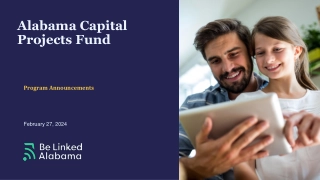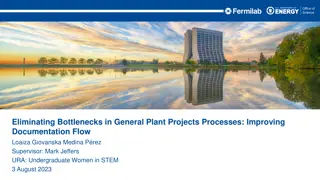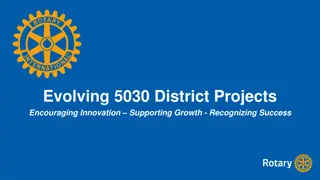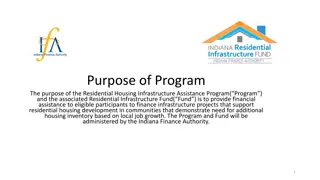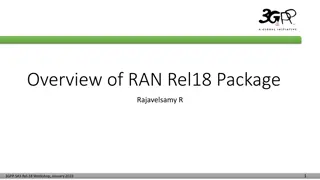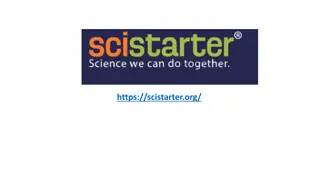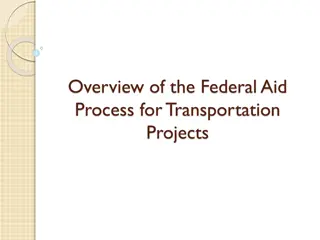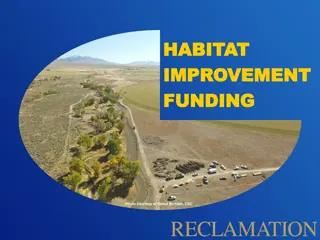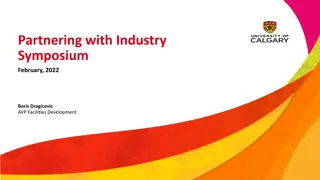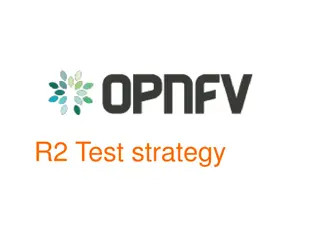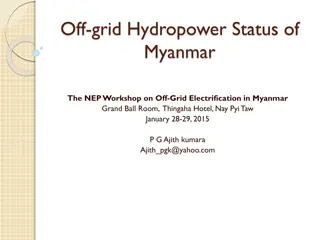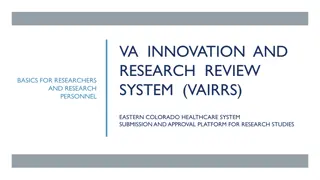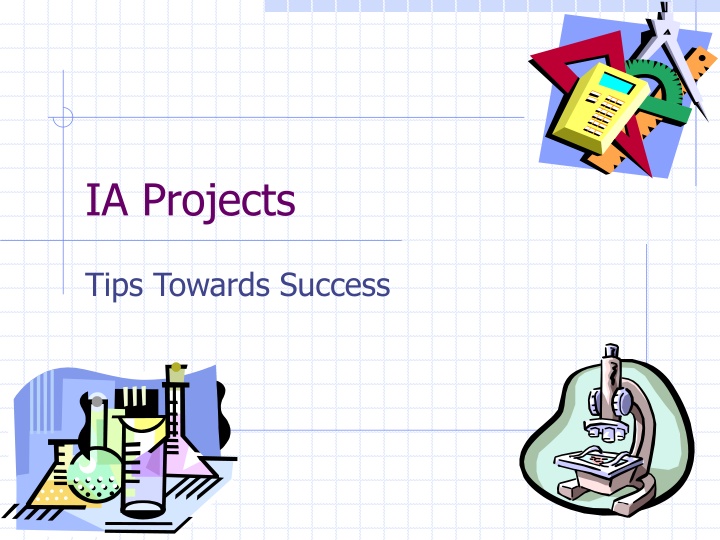
Effective Strategies for IB Physics Internal Assessment Success
Discover essential tips and guidelines for achieving success in IB Physics Internal Assessment projects. Explore assessment objectives, project types, and evaluation rubric to excel in your scientific investigations within the IB Physics curriculum.
Download Presentation

Please find below an Image/Link to download the presentation.
The content on the website is provided AS IS for your information and personal use only. It may not be sold, licensed, or shared on other websites without obtaining consent from the author. If you encounter any issues during the download, it is possible that the publisher has removed the file from their server.
You are allowed to download the files provided on this website for personal or commercial use, subject to the condition that they are used lawfully. All files are the property of their respective owners.
The content on the website is provided AS IS for your information and personal use only. It may not be sold, licensed, or shared on other websites without obtaining consent from the author.
E N D
Presentation Transcript
IA Projects Tips Towards Success
IA Assessment Objectives 1. Demonstrate knowledge and understanding of: facts, concepts and terminology; methodologies and techniques; methods of communicating scientific information. 2. Apply: facts, concepts and terminology; methodologies and techniques; methods of communicating scientific information. 3. Formulate, analyze and evaluate: hypotheses, research questions and predictions; methodologies and techniques; primary and secondary data; scientific explanations. 4. Demonstrate the appropriate research, experimental, and personal skills necessary to carry out insightful and ethical investigations.
The Internal Assessment The internal assessment task will be one scientific investigation taking about 10 hours lab time and the write-up should be 6 to 12 pages long. (not longer or shorter) It should require a purposeful research question and the scientific rationale for it. The project should be broad enough to reflect significant engagement, and narrow enough to be completed in the time allowed with the equipment available.
Valid IA Project Types A hands-on laboratory investigation (most often) Using a spreadsheet for analysis and modelling Extracting data from a database and analyzing it graphically Producing a hybrid of spreadsheet/database work with a traditional hands-on investigation Using a simulation, provided it is interactive and open-ended Some tasks may consist of relevant and appropriate qualitative work combined with quantitative work.
Valid IA Project Types The topic you select must fall under the umbrella of the IB Physics curriculum. You do not need to be restricted to our subset of SL and Option B Engineering. You may explore HL content and Options A Relativity, C Imaging, and D Astrophysics (pdfs posted on Request)
IA Rubric Personal engagement (0-2 pts) 8% Exploration (0-6 pts) 25% Analysis (0-6 pts) 25% Evaluation (0-6 pts) 25% Communication (0-4 pts) 17% Total (0-24 pts) See Handout
IA Rubric Personal engagement Related to interests; YOU design and do it Exploration Background info; Variables involved; experimental design; hypothesis; methodologies Analysis Data; Data summaries; Data analysis; Graphs; Tables; Stats; Error analysis
IA Rubric Evaluation Conclusions, sources of error, further directions, comparisons to accepted Communication Paper is complete, concise, free of errors Abstract (optional) See Slosberg s Science IA Document to maximise your score
Classroom Grading and Pacing Besides IB IA assessment rubric grading, the stages of the project will be assessed as follows. 3 Ideas (15 pts) May 30 Year 1 Project Selection (10 pts) Sept 15 Group Mock IA Project about Gases (65 pts) Sept 30 Proposal/First draft (30 pts) Oct 15 First Trials (20 pts) Nov 15 Data Complete peer presentations (20 pts) Jan 15 2nddraft for Teacher Written Feedback (30 pts) Feb 1 Group 4 project for Cover Page (30 pts) Mar 1 Final IA Paper (50 pts) Mar 15
The Research Process Choosing a project Experimental design (aka Using the scientific method) Collecting data Data analysis Presentation / Paper
Choosing a project Narrow your topic to a specific question Consider previous projects or labs done Consider your personal interests Review a textbook, lab book, or a related book Look through magazines and newspapers for current issues in the sciences Surf the internet on your topic Look for something in your everyday life that grabs your attention Develop at least 3 possible projects
Choosing a project Decide on a tentative project Discuss practical aspects with your teacher Is the scope too narrow? Is the scope too wide? Is the needed equipment available? Are there experts who can be contacted? What resources can you use?
Choosing a project Do some background reading What have other researchers studied on this topic? What did they find? What other variables can be studied? Identify at least 3 sources of information. Prepare the first draft of your project (Intro, background and planned method) Note: You may switch projects at this time. You will not be allowed to change topics after you complete the draft.
Special Clearances If you are working with vertebrate animals, you must obtain special permission and follow ethical guidelines for their humane treatment For projects involving people, you must obtain consent from your subjects If your subjects are minors (<18), you will need parental consent Mild deception is sometimes necessary when doing a psychological project Special permission must be obtained and subjects must be debriefed immediately after the experiment No project needing special clearances will be approved!
Choosing a project (Summary) Brainstorm ideas (at least 3 by May 15) Narrow your topic to a specific question Discuss practical aspects with teacher Do some background reading Choose a topic (by Aug 20) Commit your project and register your project with your teacher. (by Oct 1)
First Assignment Check out the resources posted online for help with your IA: Explore 300 IA ideas document Read Nature of Science part 1, p1-7 Read Slosberg Ch 1, p1-4 and the Appendix C list of physics labs 3 Ideas by day of the final (15 pts)
The Scientific Method A procedure based on observations that is used to answer questions Identify variables State a hypothesis Perform an experiment Accept/reject/revise the hypothesis Repeat as needed 1) 2) 3) 4) 5)
Experimental design Identify your Independent Variables (IV), Dependent Variables (DV) and Extraneous Variables Independent variables are those that you control directly Dependent variables are those that are measured in an experiment Extraneous variable are those that need to be controlled and held constant.
Experimental design Develop your hypothesis A hypothesis should include the independent variable, the dependent variable and a prediction about the effect of the IV on the DV If you have multiple IVs or DVs, you will have multiple hypotheses
Experimental design Operationalize the IV and DV (decide how exactly they will be measured or determined) Control the Extraneous variables (specify how exactly you will prevent these variables from influencing your measurement of the DV) Describe the Control condition (a Control is a case for the IV for which the IV is absent or set to zero, if possible)
Experimental design About CONTROL 2 meanings You must control the values of extraneous variables so they are the same for all trials. A Control trial is one which is performed without the IV present or with IV = 0. When you compare the effect of an IV vs a control trial, you can infer a cause and effect relationship between the IV and DV Strongest scientific conclusion possible
Experimental design Number of trials An experiment should give the same results upon replication regardless of who does the experiment or where it is done 5 is a minimum to use for averaging data 7 is a minimum to use for equation fitting 10-30 is desired for statistical analysis Consider time available and scheduling (remember to shoot for 10 of lab time)
Experimental design Standardize the experimental conditions If you have more than one IV, vary one at a time keeping the other constant Consider the First pancake principle when making pancakes there are so many variables involved, it s best to just try out something. Then modify the method based on the results of the first pancake.
Experimental design Sometimes a baseline measurement is subtracted from experimental data to obtain the effect of the independent variable on the dependent variable
Experimental design Write your intended procedure Be specific (anyone should be able to follow the directions) Include how you will find the needed materials Include any equipment you will need Do a sample trial and adjust the procedure as needed Prepare the first draft of your IA paper (Intro, background and planned method) (By Oct 15)
Experimental Design (Summary) Identify your Independent and Dependent Variables Operationalize your variables Develop your hypothesis Consider number of trials needed Consider control conditions / control trial Standardize the experiment Do a single trial run Write your final procedure
Collecting Data Use a single notebook for this purpose Work in pen (If mistakes are made, strike through them with a single line) Never throw away any measured values If you are collecting data electronically, keep an experimental journal (written or digital) describing what was done and how it is saved Back-up any electronic data in two places
Collecting Data Record the procedure actually used for each trial including any deviations from the written procedure Record the IV of each trial and the corresponding DV next to each other Make a data table for multiple trials Record all quantitative and qualitative observations you can make even if they seem irrelevant at the time Record all trials, even preliminary studies and failed trials
Collecting Data All data collected by Jan 1. Prepare a PowerPoint to share your raw data with the class the first week of Second semester. Receive peer feedback. Hand in a draft of paper by Feb 1. This draft should include as much as possible including data analysis, error analysis, and conclusions. Receive written feedback from the teacher (only allowed once during the year) including advice on data analysis specific to your project
Data analysis Types of data Nominal Ordinal Interval Rational 1) 2) 3) 4)
Data analysis Descriptive Statistics Inferential statistics Accuracy Precision
Data analysis Descriptive statistics Central tendency 1) Mean (or average) 2) Median 3) Mode 4) Bar graph
Data analysis Descriptive statistics Dispersion 1) Minimum, Maximum, Range 2) Rank, Quartiles 3) Standard deviation 4) Variance Relationships between variables 1) x-y graphs 2) Slope, intercept 3) Straightlerizing nonlinear graphs
Data analysis Inferential statistics Significance!!! Did the different levels of the IV affect the DV in a significant way? Many different tests are available (see me) Most result in a p-value A p-value is the probability that the differences you observed were due purely to chance A p-value<0.05 is statistically significant
Data analysis What test do I use? Type of data # IV conditions # trials/condition Test to use Nominal/Ordinal Any number Any number Chi-square Interval/Rational 2 3-30 t-test Interval/Rational 2 >30 z-test Interval/Rational >2 >3 ANOVA Interval/Rational >7 Any number Linear Regression
Data analysis Linear regression results in a correlation coefficient, r, between 0 and 1 If r=0, there is no relationship between the two variables If r=1, there is a perfect linear relationship For the hard sciences, r must be above 0.9 for significance and it should be at least 0.99 For the social sciences, an r value of 0.4 is sufficient to show that some relationship exists
Data analysis Percent error Observed Accepted 100 Accecpted Percent difference Difference Average 100
Error Analysis/Propagation Assess uncertainty present in measured quantities. Propagate this uncertainty through the calculations done to find the uncertainty in your results. If: ? = ? ? then: ?? = ??+?? If: ?=??? then: ??/?=??/?+??/?+??/? If: ?=an?then: ?/?=?( ?/?)
IA Paper (See also: Slosberg) Each project should be Written up into a 6-12 page paper Prepared in presentation form for class Title Abstract (optional) Introduction Background Hypothesis Procedure Data Results Conclusions
Paper Title Specific title that clearly explains what your project is about. Should be able to get an idea about the IV and DV Do not put your name on the title page
Paper It IS your paper in a single paragraph executive summary. Someone should be able to read the abstract only and get the main points of your paper. Think of it as a collection of one sentence statements of how you have met each of the objectives on the IA rubric It is ALWAYS written last and should not be included in drafts until the penultimate one. It is optional, but looks really good and professional if you can do it. Abstract
Paper Introduction No need for a subheading unless you use an abstract. Then label both. Include your personal influence for the project Include global, ethical, or safety issues. End with the research question
Paper Background Provide the physics background needed to understand the project. Define variables, explain operationalization Describe experimental design (including control variables and control trial) General methods to be used, not a step by step procedure End with the Hypothesis.
Paper Procedure Explain what you actually did in enough detail that anyone could duplicate your experiment without needing additional resources. Consider using pictures of you doing the experiment if a process if difficult to explain or of any unusual apparatus. In general IB prefers hand drawn images of apparatuses
Paper Data Include tables of raw data that connect directly to the procedure. Label units and identify measured uncertainties. You may include averages for identical trials only or graphs to display the raw data prior to processing
Paper Data Analysis Averages Std deviation Graphs / Charts Correlation Statistics for significance Error propagation
Paper Conclusion Results either support or do not support the hypothesis Specify how the data corresponds to your conclusion Do the results answer the research question? Consider sources of error Further directions
Paper References Include any resources you used to write the introduction, develop your methodology or process your data. Use APA formatting for citations. See Purdue OWL for help.
IA Paper First draft (Oct 15) For clearance to start trials Title Introduction (why this project for you) Background ( >3 links to use, general ideas, part of IB curriculum related) Hypothesis (IV and DV identified and a guess about how DV depends on IV) Procedure (tentative including equipment, # of trials and a possible schedule) References


